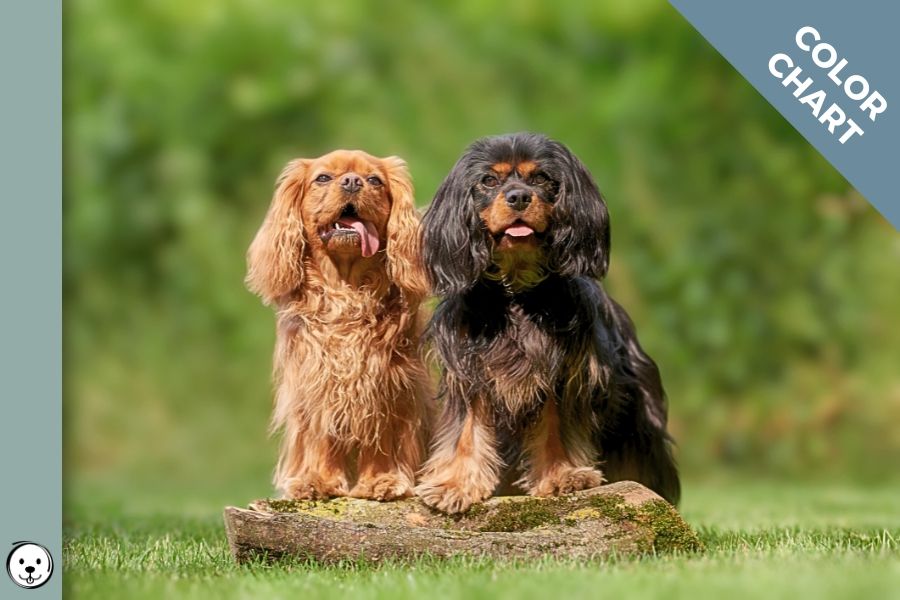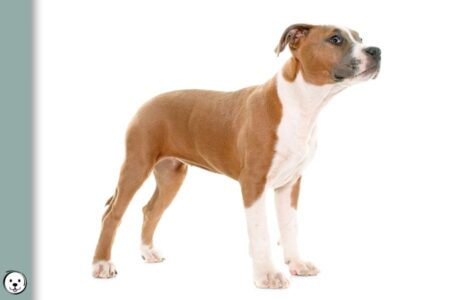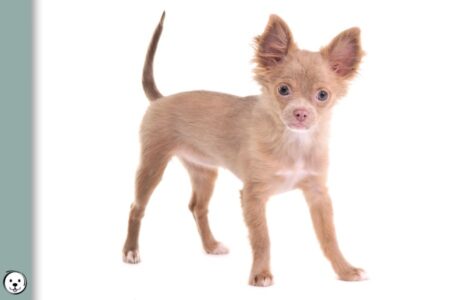An overview of Cavalier King Charles Spaniel colors and their genetics.
| B/B D/D black eumelanin ky/ky at/at tan points | S/S solid | S/sP some white <—–> | sP/sP piebald |
E/E E/e normal pattern |  tan point “Black & Tan” | 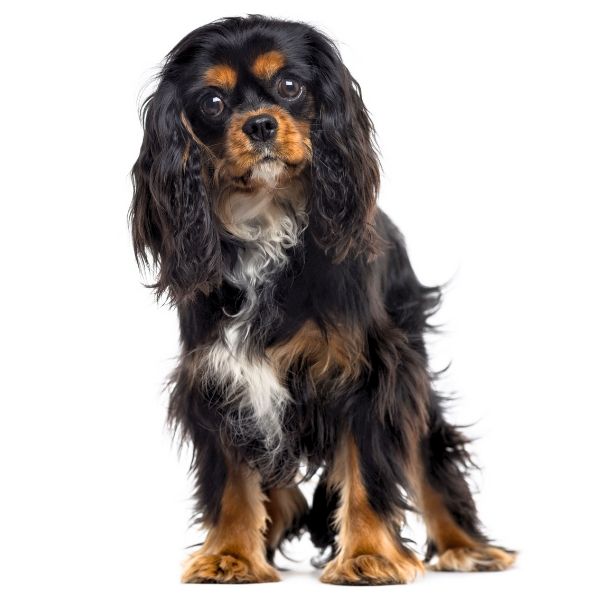 tan point & minor white |  tan point & white “Tricolor” |
| e/e recessive red | 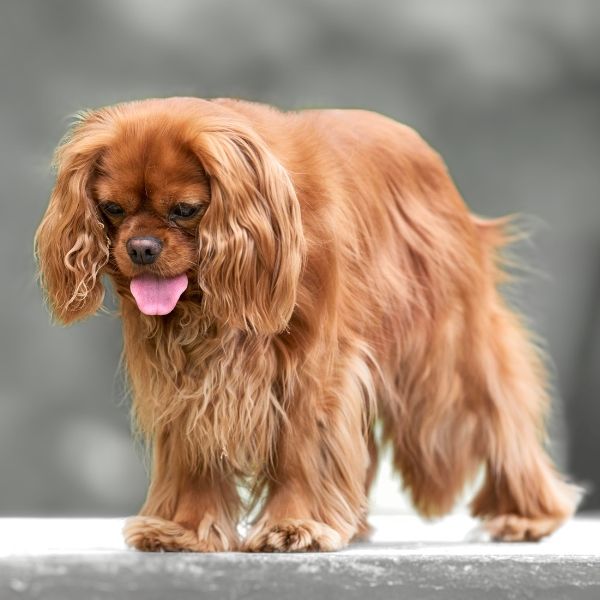 recessive red “Ruby” | 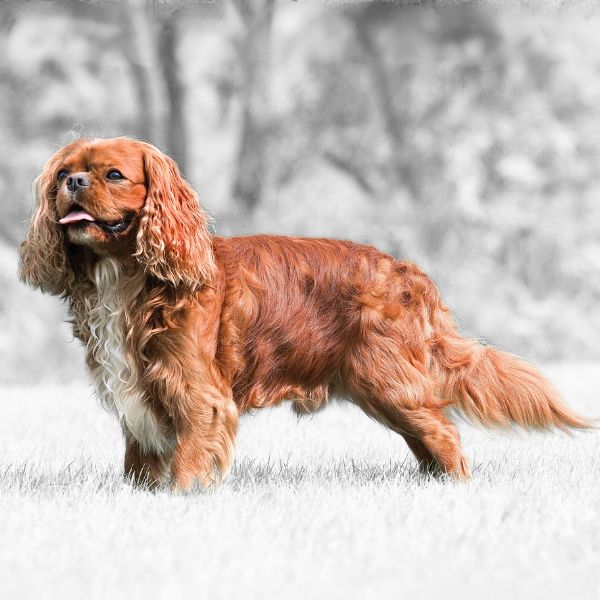 recessive red & minor white |  recessive red & white “Blenheim” |
Cavalier King Charles Spaniel Color Overview
A short discussion of breed standard patterns in the Cavalier King Charles Spaniel:
Black & Tan
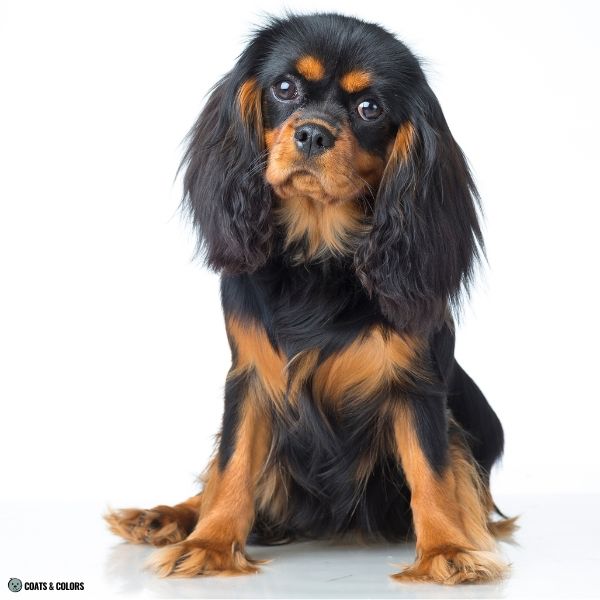
A black & tan Cavalier has a black-based tan point pattern with no white spotting.
| E LOCUS | K LOCUS | A LOCUS | S LOCUS |
|---|---|---|---|
| E/E | ky/ky | at/at | S/S |
| E/e | ky/ky | at/at | S/S |
Tricolor

A tricolor Cavalier also has a black-based tan point pattern but with piebald spotting.
| E LOCUS | K LOCUS | A LOCUS | S LOCUS |
|---|---|---|---|
| E/E | ky/ky | at/at | sP/sP |
| E/e | ky/ky | at/at | sP/sP |
Ruby
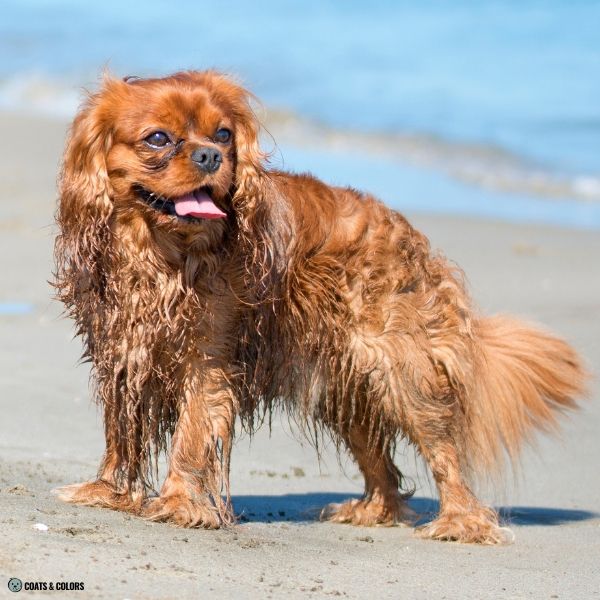
A ruby Cavalier has a black-based recessive red pattern with no white spotting.
| E LOCUS | K LOCUS | A LOCUS | S LOCUS |
|---|---|---|---|
| e/e | ky/ky | at/at | S/S |
Blenheim

A Blenheim Cavalier has a black-based recessive red pattern but with piebald spotting.
| E LOCUS | K LOCUS | A LOCUS | S LOCUS |
|---|---|---|---|
| e/e | ky/ky | at/at | sP/sP |
Cavalier King Charles Spaniel Color Genetics Summary
These are color traits that occur in Cavalier King Charles Spaniels:
| E-LOCUS | E = normal pattern e = recessive red |
| K-LOCUS | ky = normal pattern |
| A-LOCUS | at = tan points |
| B-LOCUS | B = black b = brown (rare!) |
| D-LOCUS | D = normal pigment |
| S-LOCUS | S = no spotting sP = piebald spotting |
| M-LOCUS | M = merle (introduced) m = non-merle |
Cavalier King Charles Spaniel Colors
What colors do Cavalier King Charles Spaniel come in?
Eumelanin
Cavaliers are fixed for non-diluted black eumelanin (B/B D/D).
Recessive brown (b) is also present in the breed, but not a standard color.

Phaeomelanin
The phaeomelanin intensity on a Cavalier Spaniel was bred for a rich chestnut red color. Red puppy coats can darken over time.
Some dogs with lower pigment intensity may look more yellow than red.

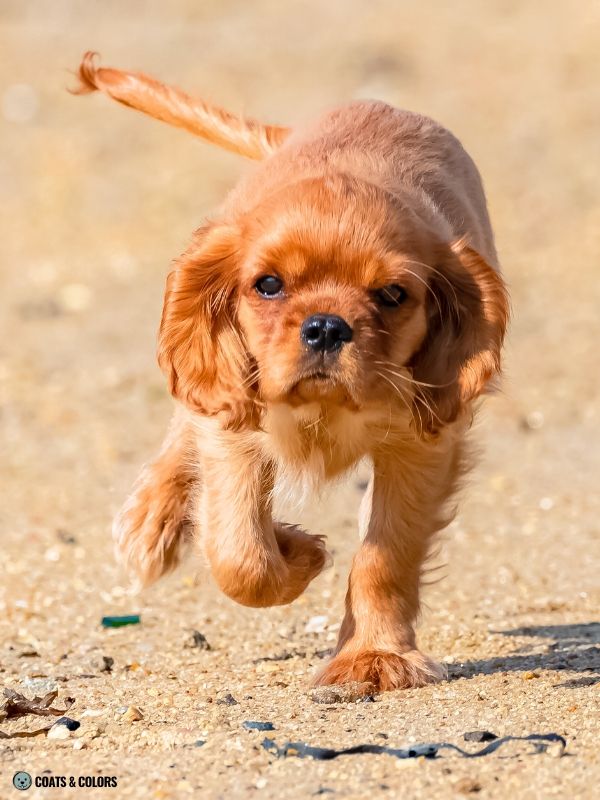
White Spotting In Cavaliers
In both Ruby and Black & Tan, all white markings are considered faults.
However, any solid-patterned dog can have some residual white.

White spotting in parti Cavaliers typically comes from piebald.
Piebald is the trait that separates the “whole colors” from the “parti colors“.
White piebald spotting turns Black & Tan into Tricolor and solid Ruby into Blenheim.
The white areas just hide some of the original pattern.
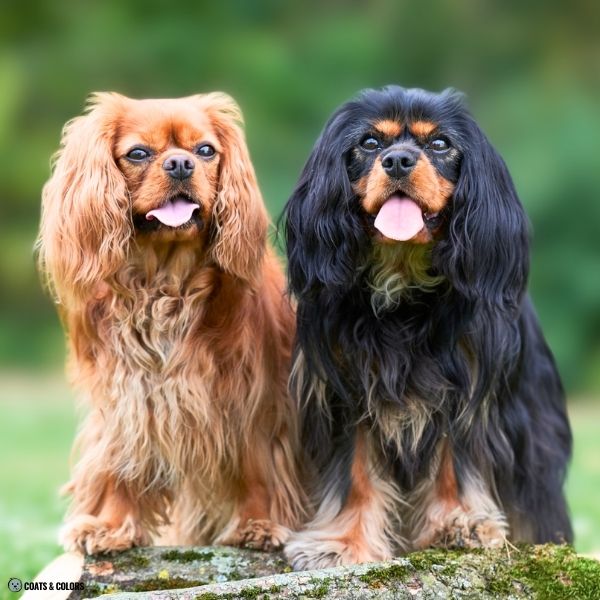
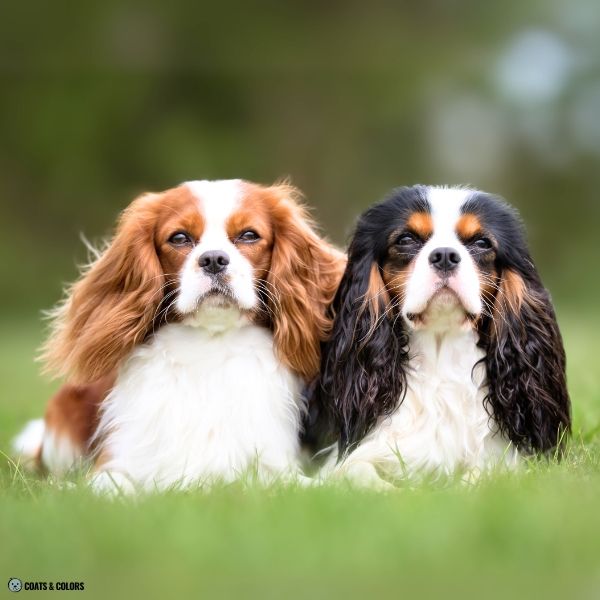
In this breed, two copies (sP/sP) give a parti-colored dog with a medium to high amount of white.
Some homozygous dogs are heavily blanketed while others have a mostly white coat.
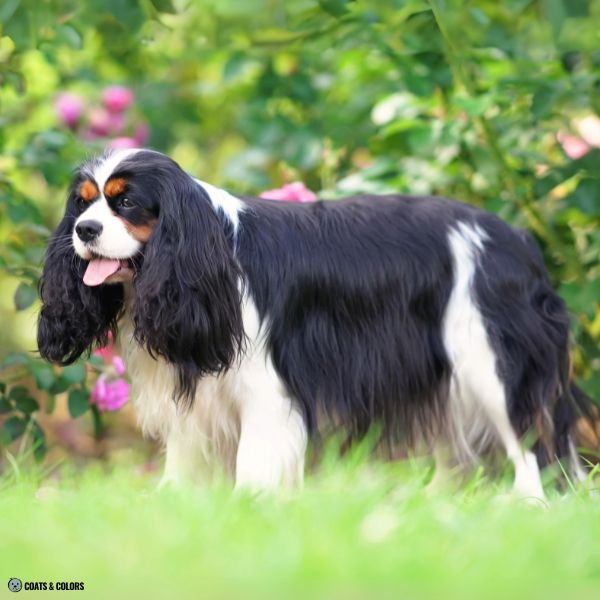
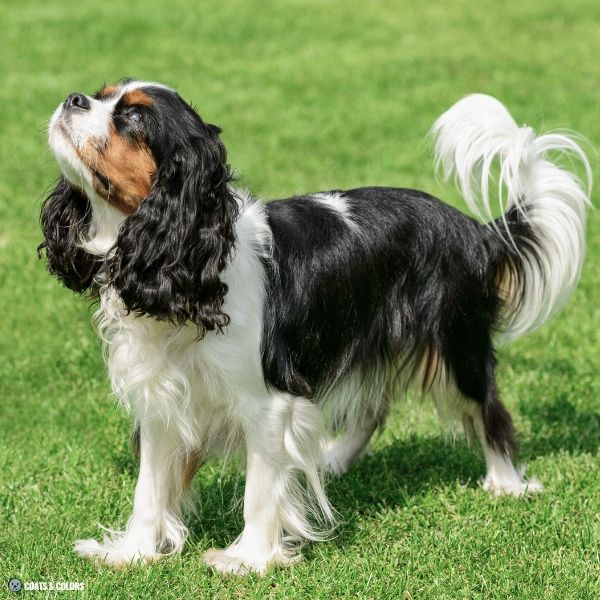



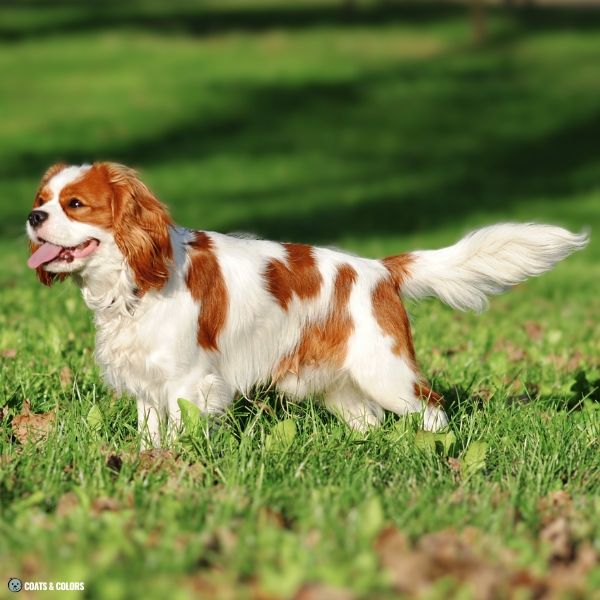
And one copy of piebald (S/sP) typically causes some smaller amount of white, e.g. a fake Irish pattern or a white patch on the chest.
Some of these dogs are almost solid, some may pass as a blanketed parti.



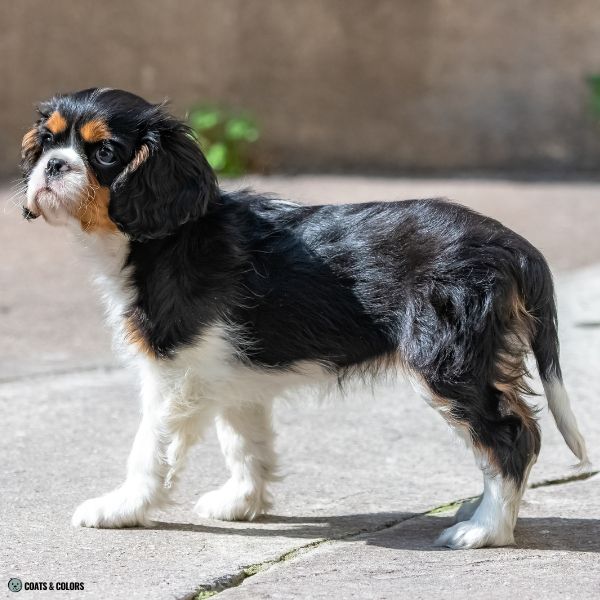

The amount of white you get with piebald is never fully predictable.
You just breed for “on-average patterns” and hope to avoid outliers.
Some overlap between loud S/sP and minimalistic sP/sP patterns is to be expected.
And even dogs with the same genotype can produce very different spotting patterns.
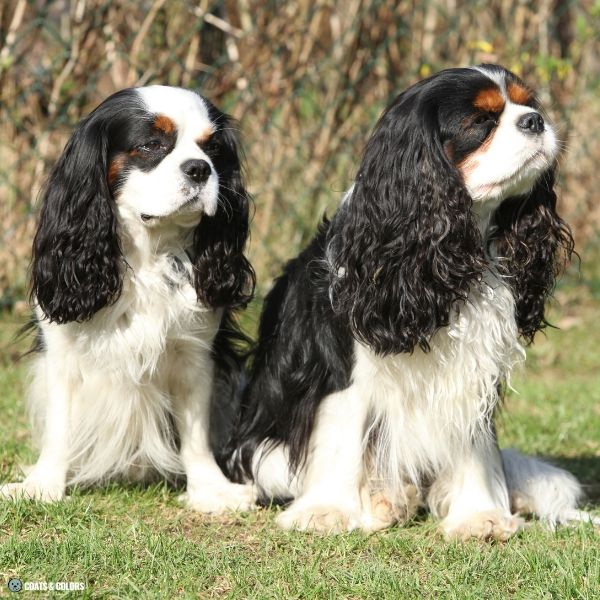
Carriers (S/sP) often have too little white to produce the blaze or “well broken up markings” required in parti patterns. But too much white to be solid because of their “undesirable white markings“.
This presents a challenge as it discourages breeders from crossing a parti (sP/sP) with a solid (S/S) dog to avoid producing a whole litter of piebald carriers (S/sP).
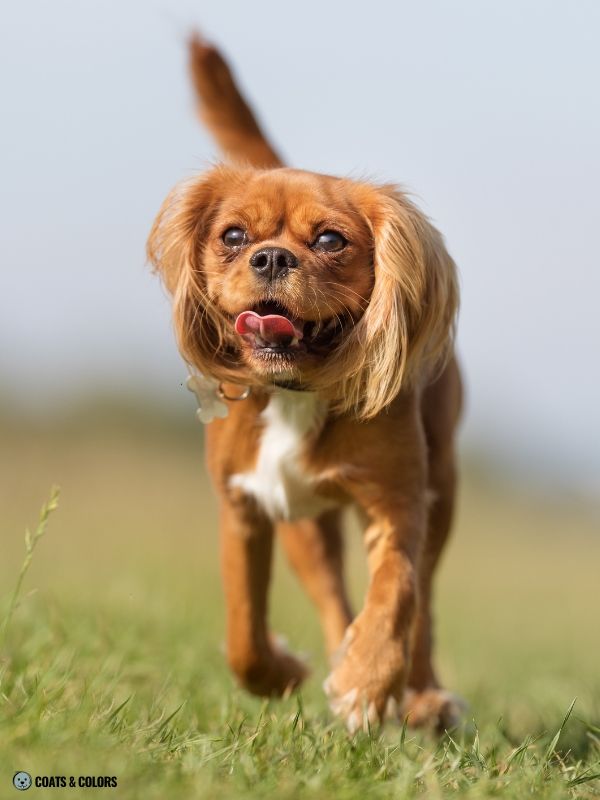
Breeding parti and whole colors as separate varieties creates a subset of “breeds within the breed“.
And further reducing the overall genetic diversity is not exactly what this breed needs right now.

The Cavalier breed standard calls for “pearly white” markings.
However, the white areas are due to a lack of pigment which does come without any shade or color, of course. In this case, pearly likely means they should have a shiny, straight, and silky coat.
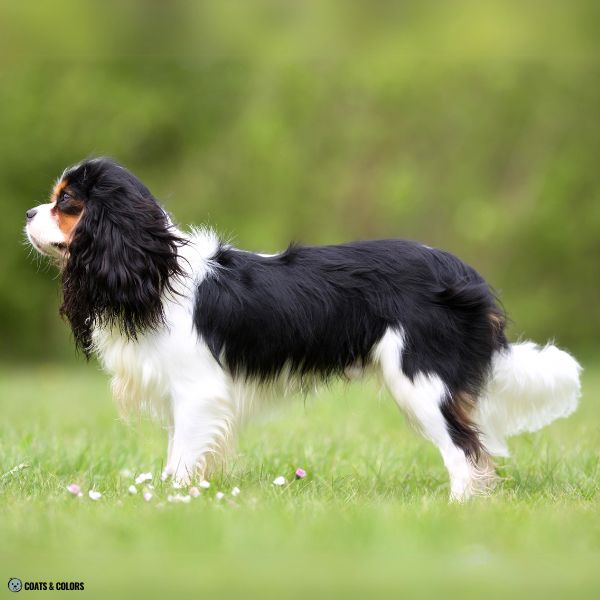
In Cavaliers, parti patterns are known to come with a rather wide blaze.
But dogs should not have too much white on the face overall. Patches of color should always be “evenly spaced on the head and surround both eyes“[1].

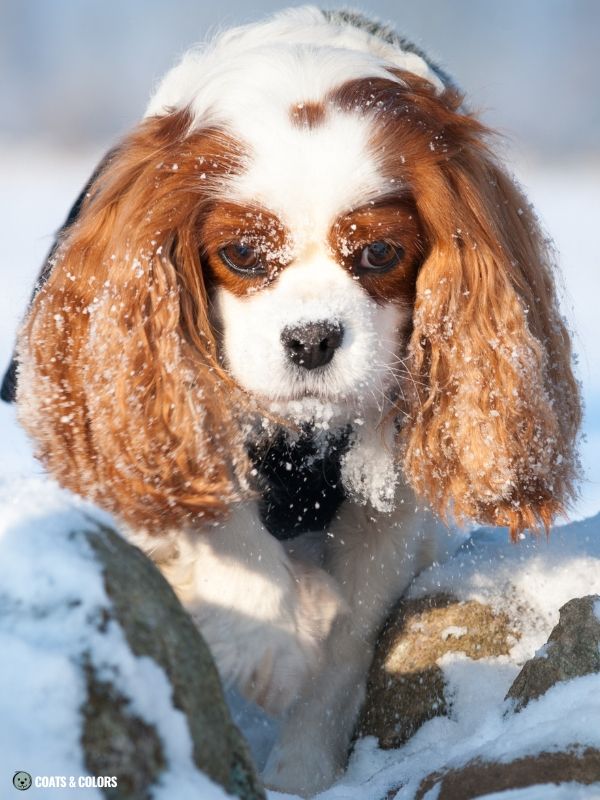
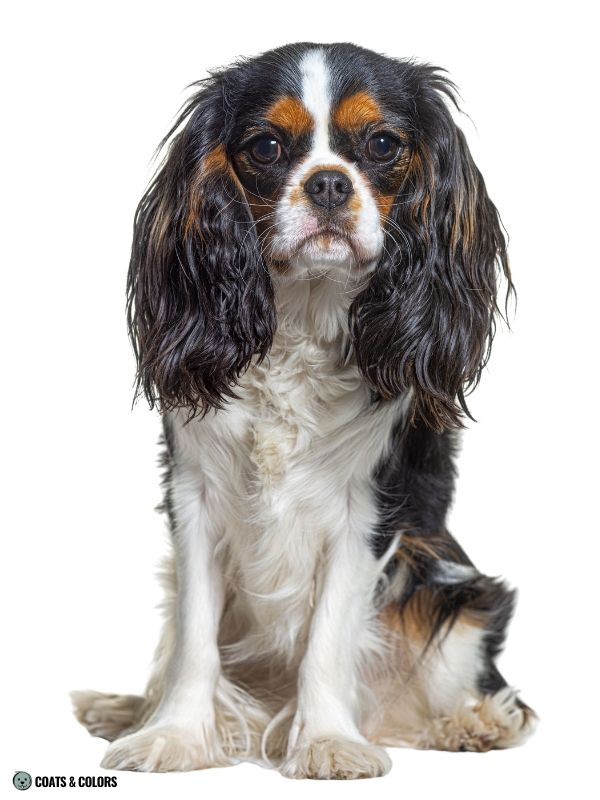
But breeding for lots of white on the head often leads to crooked and uneven markings such as a split face.
If one eye is fully surrounded by white it’s a “half mask“, a fully white face is called a “clown face“.


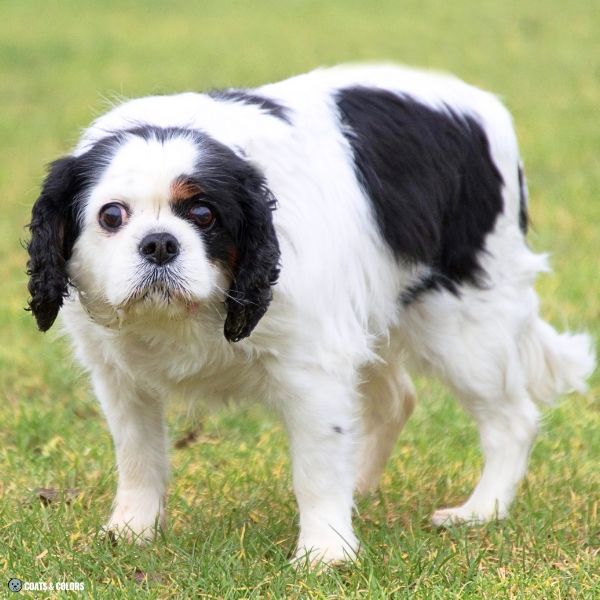
For some unknown reason, white spotting tends to grow bigger in e/e dogs compared to their E/e or E/E littermates. Recessive red can also give torn edges around color markings.
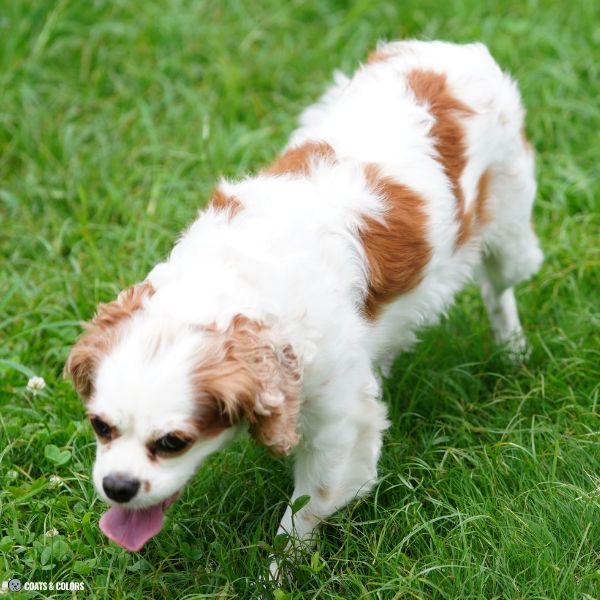
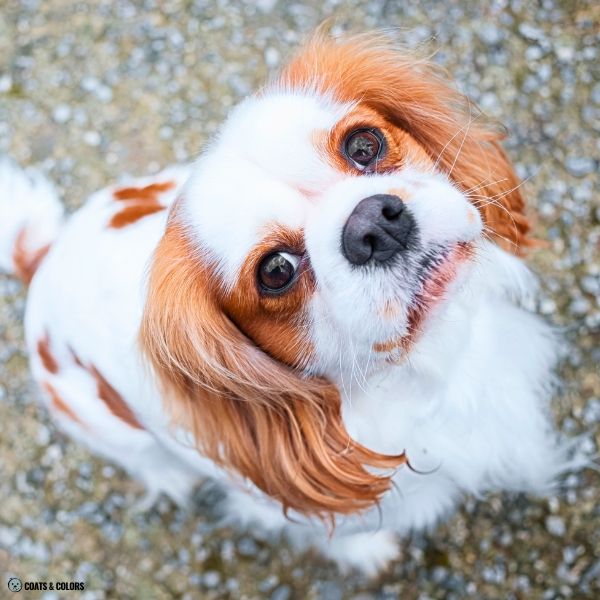

Overall, Blenheims tend to have more dramatic hourglass or panda blazes.
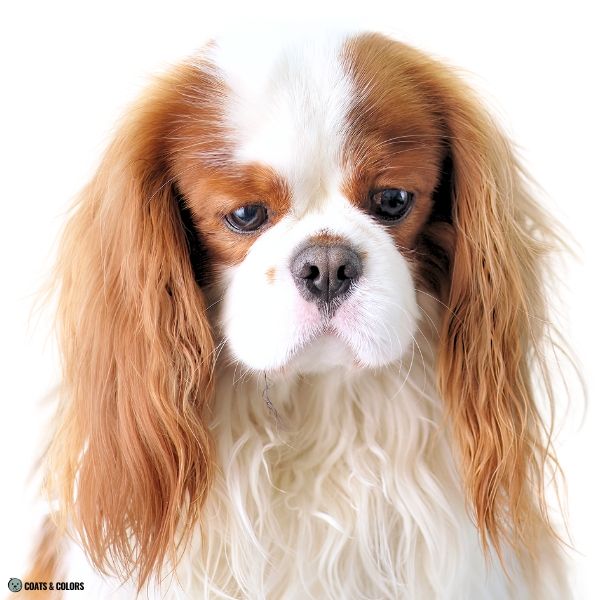
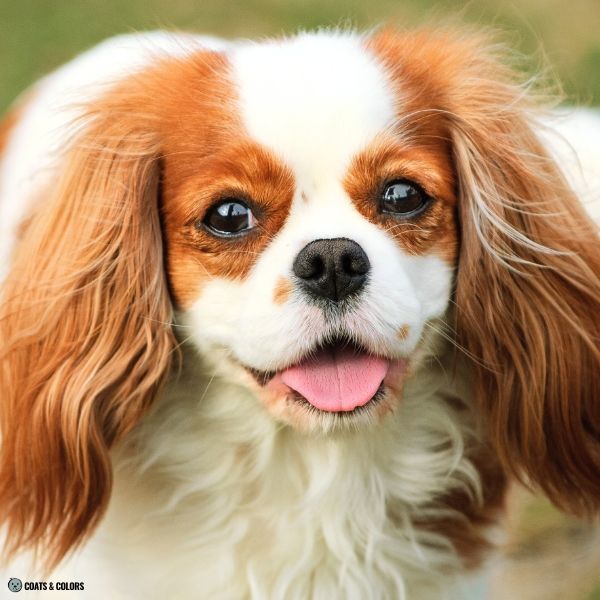

A small patch of color on the top of a Blenheim’s head is called a lozenge spot[1,2].
This is neither “a unique characteristic of the breed” nor super uncommon.
Many dog breeds with a lot of head white have this spot.
Think of this spot as a faint flicker of one of the “pigment centers” on the dog’s head fighting a losing battle against his extended piebald pattern.
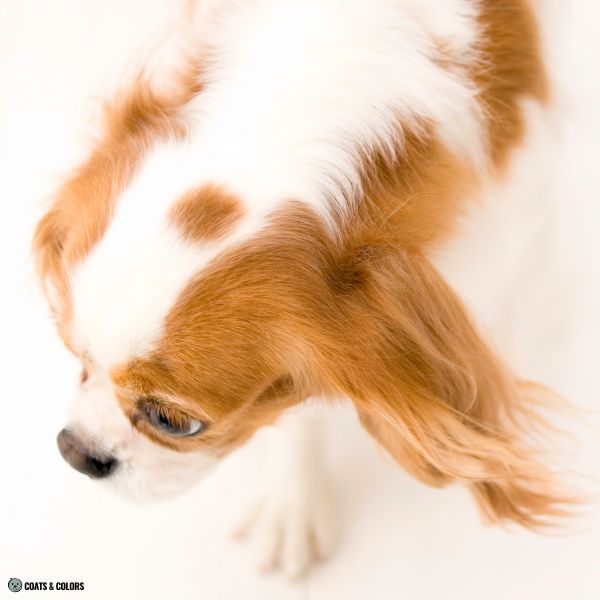
Sometimes, you get a spot like this in other places.
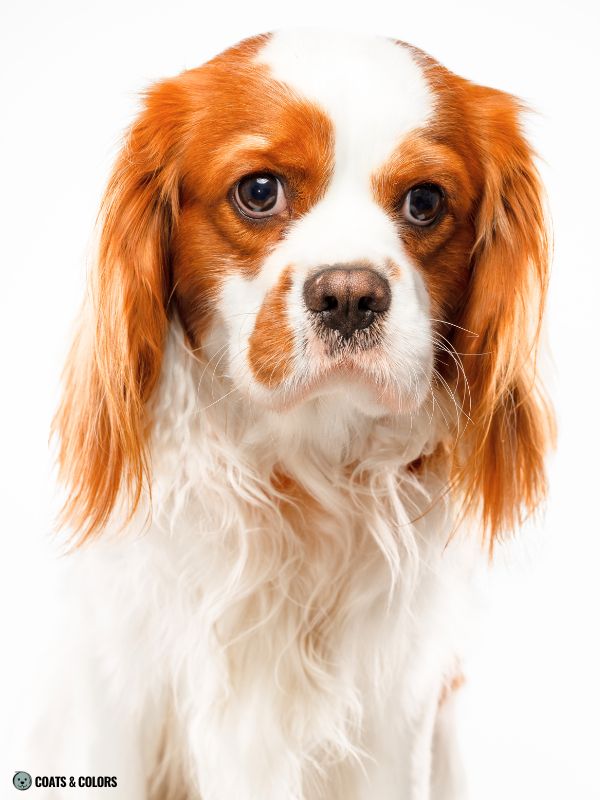
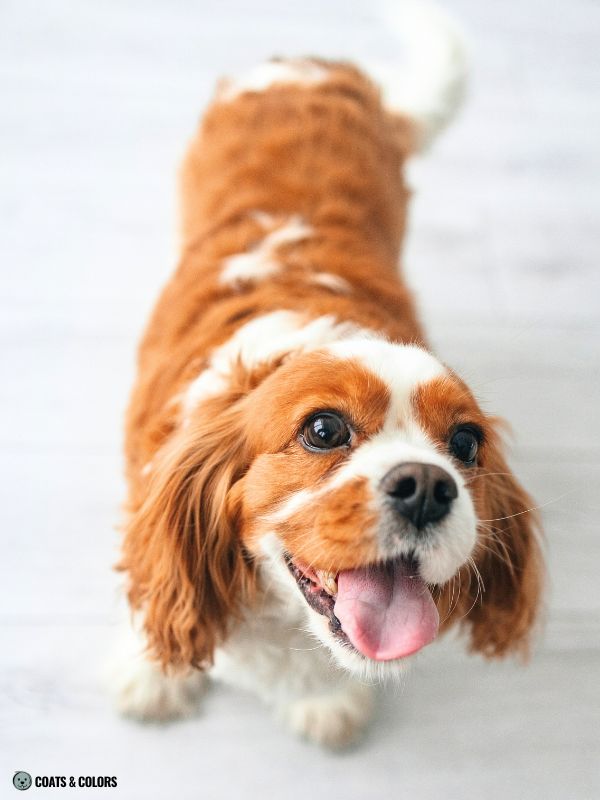
There are other traits that can give white spotting.
In Cavaliers, whitehead wouldn’t be too surprising since dogs are bred for a wide blaze up their forehead.
However, in quite extended piebald patterns, it can be impossible to determine if extra head white comes from just piebald or from another trait.
The best way to spot whitehead in action is to look at otherwise almost solid dogs that shouldn’t have added face white just from piebald.
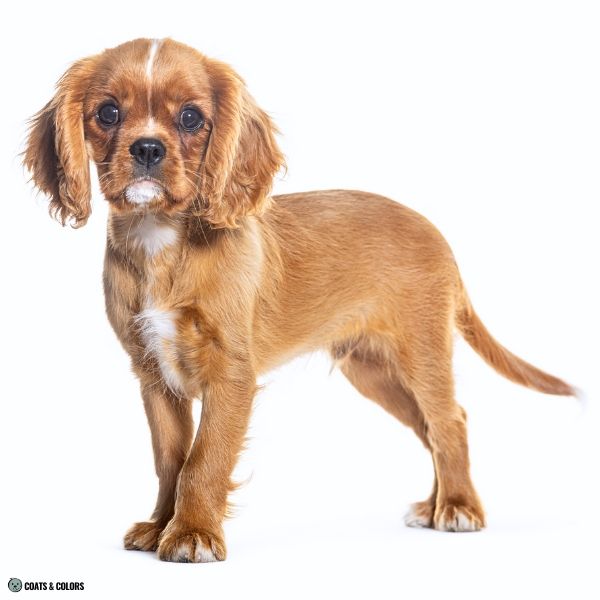
Dogs with white spotting can have the odd stray freckle on their nose or paws.

Some Cavaliers have lots of real ticking.
While other spaniel breeds like the Cocker Spaniel accept mottles and roan as normal patterns, the Cavalier does not. They consider any “heavy ticking on Blenheims or Tricolors” a fault.
However, ticking needs white marking to express. So it may be present but hidden in solid dogs.

Eye Color
Cavalier King Charles Spaniels are supposed to have dark eyes.
Dogs with too much head white are at risk of having the odd blue eye.
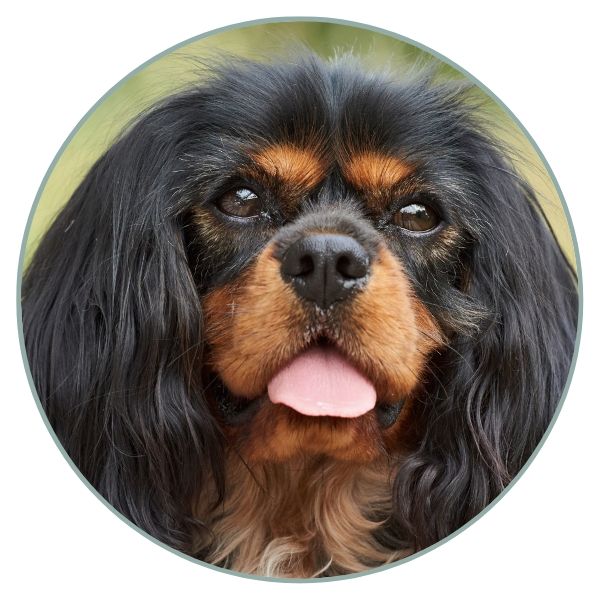
Nose Color
Cavaliers produce black eumelanin and will have a black nose.
Nevertheless, recessive red (e/e) is known to sometimes cause fading nose pigment.
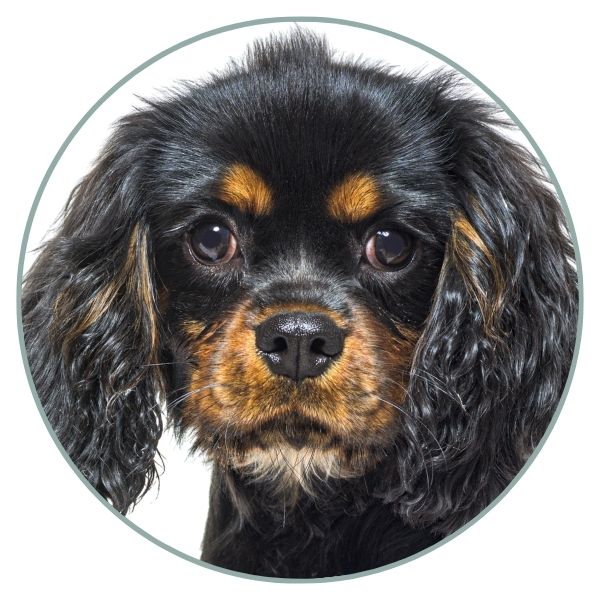
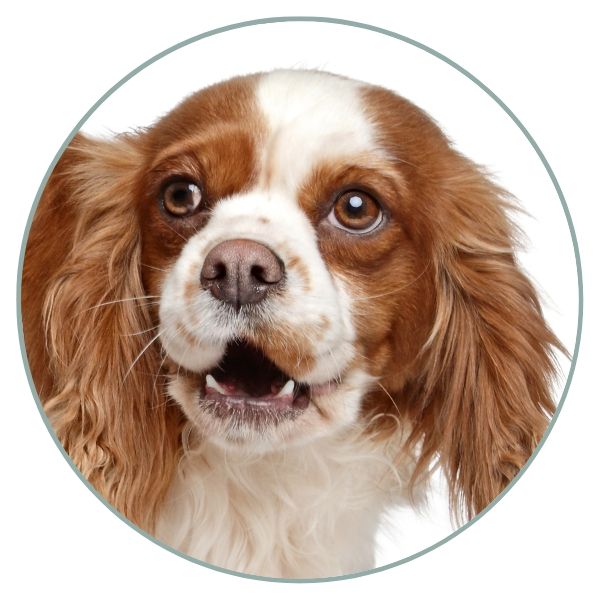
And some dogs with extended white spotting on the muzzle may be born with a pink-spotted nose.
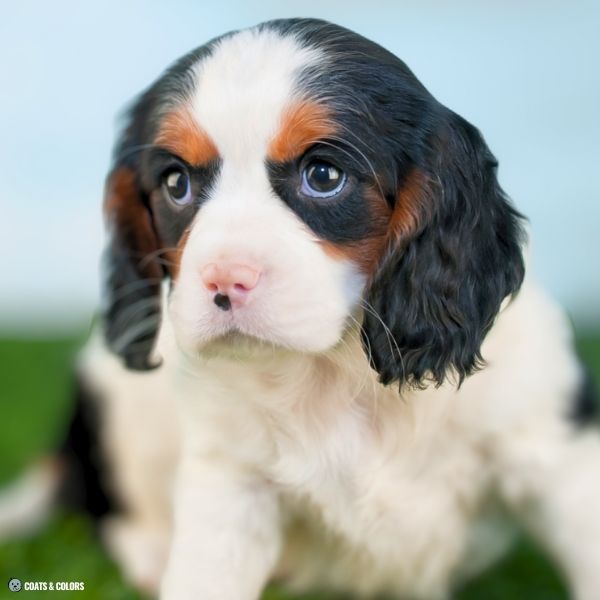
Cavalier King Charles Spaniel Patterns
What patterns can a Cavalier have?
ky/kyat/atE/E
E/eS/Stan point, solid
"Black & Tan"
sP/sPtan point, white
"Tricolor"
-
e/eS/Srecessive red, solid
"Ruby"
sP/sPrecessive red, white
"Blenheim"
A Locus
All Cavaliers are fixed for a tan point pattern (at/at) at the A locus.
Only dogs with an E/- genotype can express their pattern.
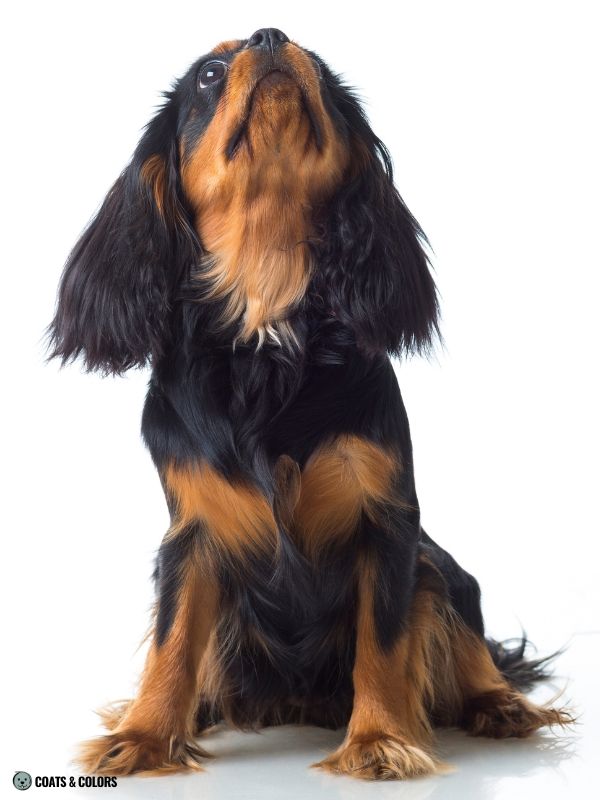
The breed standard wants a tan-pointed dog to be “jet black with rich, bright tan markings“.
However, it is well within the normal variation of this pattern to sometimes give lighter undercoat or tan hairs intermingling in the black areas or having some running tan going on.
A small number of dogs end up with smutty tan markings.

K Locus
This breed is fixed for normal pattern expression (ky/ky).
E Locus
Cavaliers can be either E/E, E/e, or e/e.
One copy of the dominant wild type E allele (E/-) is enough to express the black and tan pattern (with or without white). Sometimes, dogs with E/e may have slightly larger tan points than their E/E relatives.
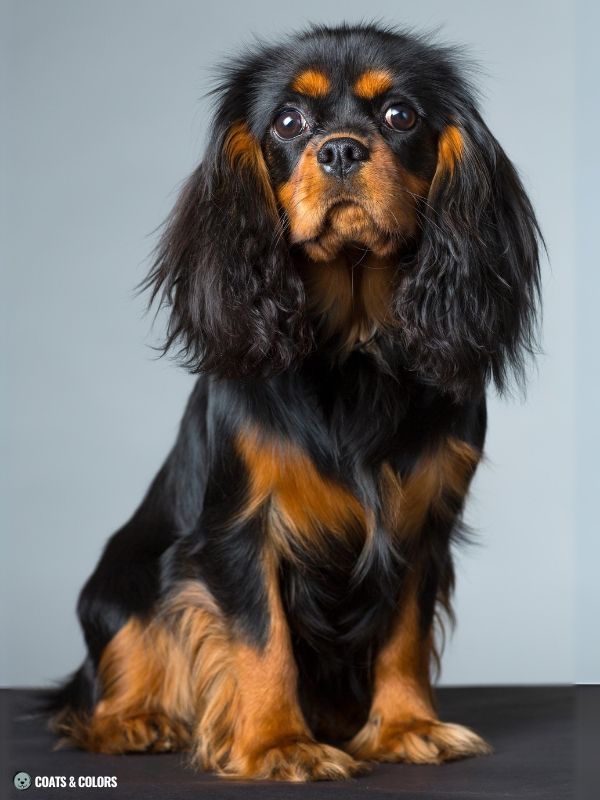
Finally, recessive red (e/e) completely removes the ability to produce eumelanin in the coat.
This will give a solid red coat (again, with or without white spotting) since affected dogs can not produce the black portions of their black & tan pattern.
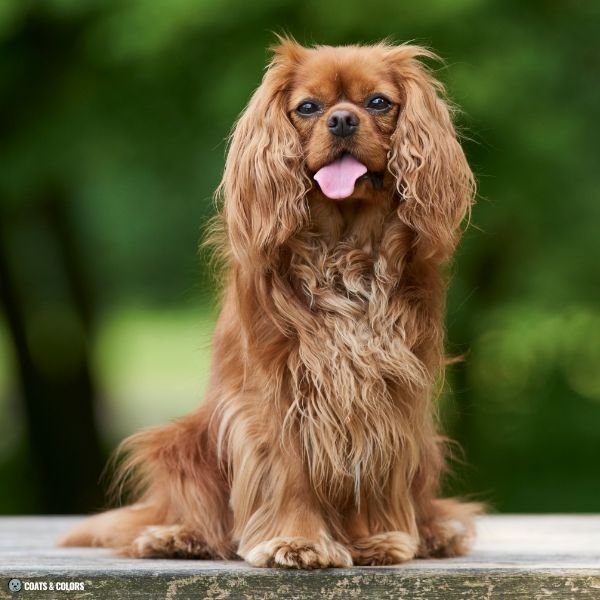
As a breed term, some might call the E variant “dominant black” (because it is dominant to e and gives a black & tan coat). However, in proper genetic terms, dominant black means something else.
Mismarks and Fancy Colors
There are some non-standard colors in the Cavalier King Charles Spaniel:
Chocolate
Dogs with two copies of brown (b/b) will express brown instead of black eumelanin.
This will turn their black & tan pattern into a chocolate & tan pattern.
On ruby red dogs, there is no black pigment to be modified to brown, of course. However, b/b will still give them brown nose and skin pigment and is likely to also cause lighter eyes.
Solid Colors
Some Cavaliers are solid black or solid chocolate (with or without white spotting).
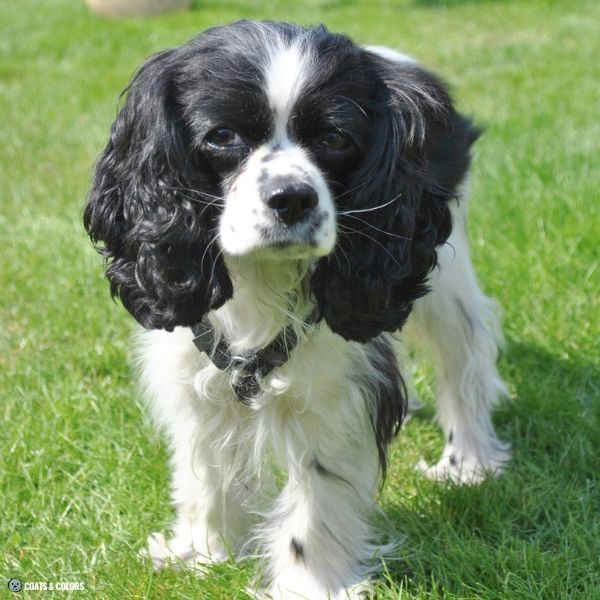
These solid-colored dogs express either recessive black (E/- ky/ky a/a) or dominant black (E/- KB/-).
Both traits can hide in solid red Ruby or Blenheim dogs (e/e).
Their recessive red pattern overrules both K and A locus expression.
Merle
In an attempt to breed for fancy colors, merle (M*) has also been introduced into Cavaliers.
Classic Merle will lighten random areas of eumelanin pigment to a lighter color.
Solid White
There have been records of Cavaliers with a solid white coat.
These dogs are often classified as “albino“, and for some of them this may be true.
However, from what I’ve seen many of these dogs have a solid black nose or brown eyes. Both of which are impossible with real albinism (found one at @threedesertcavs on Instagram).
So these white dogs likely get their coat from an extended white spotting pattern (which can also cause blue eyes, pink spotting on the nose and eye rims and puts the dogs at risk of being born deaf).
Learn More
Links
[1] American Kennel Club (AKC): Official Standard for the Cavalier King Charles Spaniel (pdf)
[2] Fédération Cynologique Internationale (FCI): Cavalier King Charles Spaniel Breed Standard
[3] Dreger et al. (2019). True Colors: Commercially-acquired morphological genotypes reveal hidden allele variation among dog breeds, informing both trait ancestry and breed potential. PLoS ONE 14(10): e0223995. https://doi.org/10.1371/journal.pone.0223995

Hi! I’m Steffi. I am a biologist and a big time dog nerd. You are curious about coat color genetics? You’ve come to the right place! Read more.

